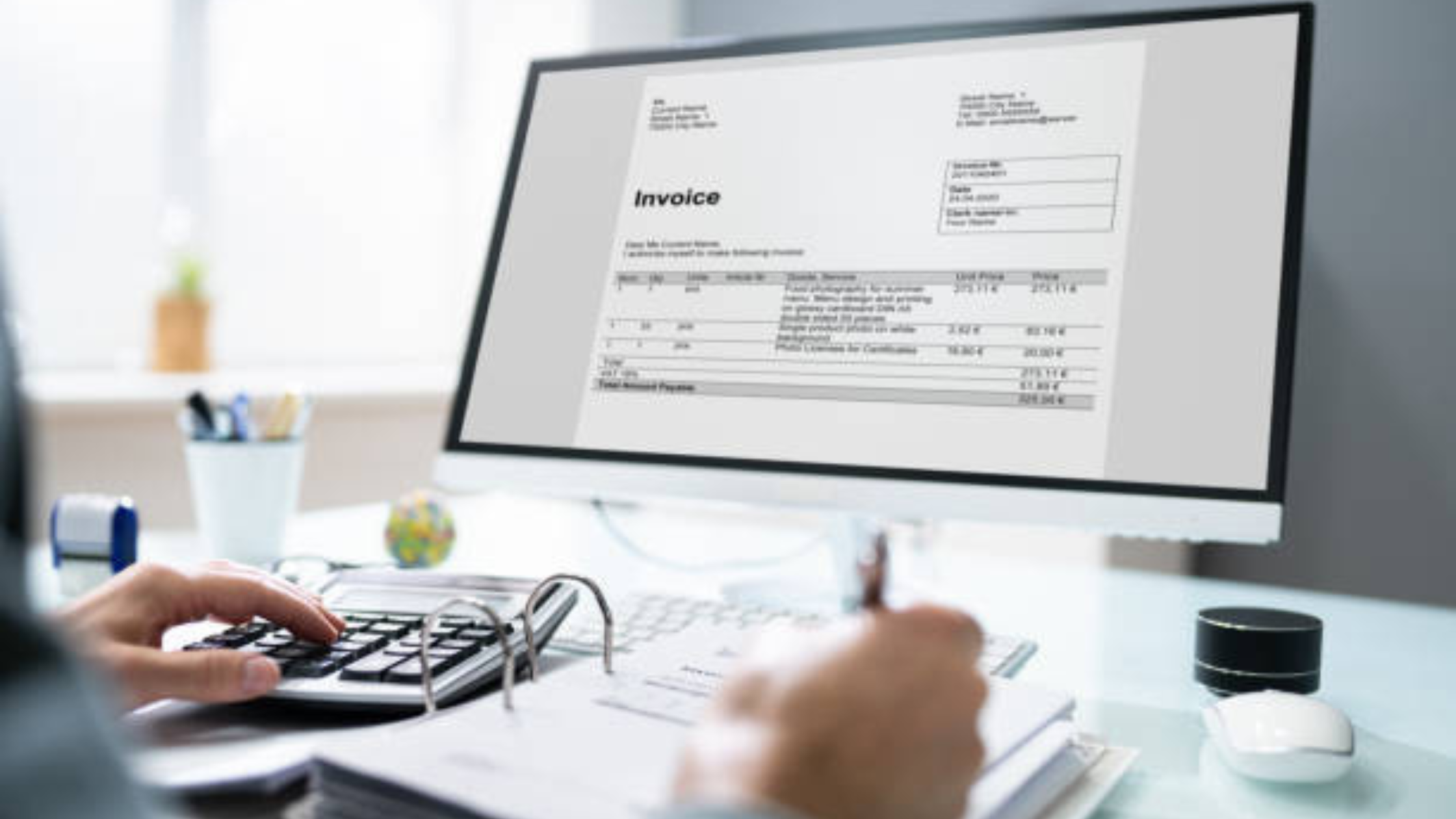Streamline Your Restaurant with Digital Receipts

Restaurants are constantly seeking ways to enhance efficiency and customer satisfaction. One key solution that has gained traction is the implementation of digital receipts. Streamlining your restaurant with digital receipts not only reduces paper waste but also offers a seamless experience for both customers and staff. By embracing this technology, restaurants can simplify their transaction processes, improve order accuracy, and build a database of valuable customer information for future marketing efforts. In addition, digital receipts can be customized to include promotions, surveys, and links to social media platforms, enhancing customer engagement and loyalty. This shift towards digitalization not only aligns with current environmental trends but also showcases your restaurant as innovative and customer-centric. Let's explore how integrating digital receipts can revolutionize your restaurant's operations and elevate the overall dining experience.
Advantages of Digital Receipts
Enhanced Customer Experience
In this digital age, providing customers with digital receipts offers them convenience and accessibility. Digital receipts can be easily stored on smartphones or in email, making it convenient for customers to access them whenever needed. This enhances the overall customer experience by reducing the hassle of keeping track of paper receipts. Moreover, digital receipts can also provide a platform for businesses to personalize their communication with customers. By including special offers, personalized messages, or links to survey feedback forms in digital receipts, businesses can further enhance customer engagement and loyalty.
Improved Efficiency in Transactions
Digital receipts streamline the transaction process for both customers and businesses. With digital receipts, there is no need to spend time printing and organizing paper receipts. This not only saves time but also reduces the chances of errors in transactions. Additionally, digital receipts can be automatically matched with transactions, making it easier for customers to track their purchases. Furthermore, the data from digital receipts can be integrated into customer relationship management systems, providing businesses with valuable insights into customer behavior and preferences. This data-driven approach can help businesses tailor their marketing strategies and improve customer satisfaction.
Environmentally Friendly Option
One of the key advantages of digital receipts is their positive impact on the environment. By reducing the usage of paper receipts, businesses can contribute to environmental conservation efforts. Digital receipts help in minimizing paper waste, which in turn helps in reducing deforestation and environmental pollution. Choosing digital receipts over paper receipts is a sustainable choice that aligns with eco-friendly practices. Additionally, digital receipts also support the concept of a paperless office, reducing the overall carbon footprint of businesses. By promoting digital receipts, businesses can showcase their commitment to sustainability and attract environmentally conscious customers.
Cost-Effective Solution
Another significant advantage of digital receipts is their cost-effectiveness. Businesses can save money by reducing the expenses associated with traditional paper receipts, such as printing, storage, and distribution costs. Digital receipts eliminate the need for physical paper, ink, and printing equipment, resulting in long-term cost savings. Moreover, digital receipts can facilitate faster reimbursement processes for customers, as they can easily retrieve and submit digital receipts for expense claims or returns.
Data Security and Privacy
Digital receipts offer enhanced data security and privacy compared to traditional paper receipts. By utilizing secure digital platforms and encrypted technologies, businesses can ensure that customer transaction information remains confidential and protected. Digital receipts reduce the risk of sensitive data exposure or loss associated with physical receipts, which can be easily misplaced or stolen. Customers can feel more secure knowing that their purchase history and personal details are safeguarded through digital receipt systems.
Integration with Accounting Systems
Digital receipts can seamlessly integrate with accounting systems, simplifying financial record-keeping and reconciliation processes for businesses. By automatically capturing transaction data from digital receipts, businesses can streamline their accounting operations and improve accuracy in financial reporting. Integration with accounting software also enables real-time tracking of expenses, revenue, and cash flow, facilitating better financial decision-making and budget management.
Mobile Accessibility and Convenience
With the increasing reliance on smartphones and mobile devices, digital receipts offer enhanced accessibility and convenience for customers. Mobile-friendly digital receipt platforms allow customers to access their transaction records anytime, anywhere, using their smartphones. This mobility and convenience factor not only benefits customers by providing instant access to purchase details but also empowers businesses to engage with customers through mobile channels. By leveraging mobile accessibility, businesses can send targeted promotions, loyalty rewards, or product recommendations directly to customers' smartphones via digital receipts, enhancing the overall shopping experience.
Customization and Personalization
Digital receipts provide a versatile platform for customization and personalization in customer interactions. Businesses can tailor the design, content, and branding of digital receipts to align with their brand identity and marketing objectives. Personalizing digital receipts with customer names, purchase history, or product recommendations can create a more engaging and memorable post-purchase experience. Moreover, businesses can leverage data analytics from digital receipts to understand customer preferences and behavior, enabling targeted marketing campaigns and personalized offers. The ability to customize digital receipts based on customer segmentation and purchase patterns enhances the overall brand perception and fosters long-term customer relationships.
Regulatory Compliance and Documentation
Digital receipts offer a compliant and efficient solution for businesses to meet regulatory requirements and maintain accurate transaction records. By transitioning to digital receipt systems, businesses can ensure adherence to tax regulations, data protection laws, and industry standards governing financial transactions. Digital receipts provide a reliable audit trail for tracking sales, refunds, and exchanges, simplifying compliance audits and financial reporting. Moreover, digital receipt platforms can automate the generation and storage of transaction documentation, reducing the risk of manual errors or document loss. By adopting digital receipts as a standardized practice, businesses can enhance transparency, accountability, and compliance in their financial operations.
The advantages of digital receipts encompass a wide range of benefits for both customers and businesses. From enhancing customer experience and improving efficiency in transactions to promoting environmental sustainability and data security, digital receipts offer a modern and effective alternative to traditional paper receipts. By embracing digital receipt technologies, businesses can optimize their operations, strengthen customer relationships, and contribute to a more sustainable and streamlined financial ecosystem.
Implementation of Digital Receipts
Choosing the Right Digital Receipt System
In the digital era, businesses are increasingly adopting digital receipt systems to streamline operations and enhance customer experience. Selecting the most suitable digital receipt system is a critical decision for restaurants seeking to modernize their processes. Considerations such as cost-effectiveness, user-friendliness, compatibility with existing systems, customer support availability, and robust data security measures are paramount. It is imperative to opt for a system that not only meets current needs but also has the flexibility to adapt to future business requirements and technological advancements.
Training Staff on Digital Receipt Processes
After the careful selection of a digital receipt system, the next vital step is to ensure that the staff is well-trained in utilizing the system efficiently. Comprehensive training programs are essential to facilitate a seamless transition from traditional paper receipts to digital formats. Staff should be proficient in tasks like issuing digital receipts, processing returns electronically, and addressing customer queries regarding digital transactions. Moreover, educating employees on the environmental benefits of digital receipts, such as reducing paper waste and enhancing transaction speed, can boost their enthusiasm for embracing the new system.
Integrating Digital Receipts with Other Restaurant Systems
Maximizing the advantages of digital receipts requires integrating the system with other key restaurant operations. Seamless integration with Point of Sale (POS) systems enables automatic generation of digital receipts upon transaction completion, minimizing errors and enhancing overall customer satisfaction. By integrating digital receipt capabilities with inventory management software, restaurants can ensure real-time updates on product availability, thus optimizing stock levels and improving order fulfillment efficiency. Furthermore, linking digital receipts with customer relationship management tools empowers restaurants to personalize marketing strategies based on individual purchasing patterns and preferences, fostering customer loyalty and driving repeat business.
In summary, the successful implementation of digital receipts is a multifaceted process encompassing strategic system selection, comprehensive staff training, and seamless integration with existing restaurant processes. Embracing digital receipts not only enhances operational efficiency and customer service but also provides valuable insights into business operations, paving the way for sustained success in the competitive restaurant industry.
Customer Feedback and Data Analysis
Businesses have access to a wealth of data that can provide valuable insights into customer preferences and behaviors. One valuable source of this data is customer feedback, which can be collected through various channels, including digital receipts. In this blog section, we will explore how businesses can leverage digital receipts for customer feedback collection, analyze the data obtained from these receipts to gain insights, and ultimately improve their services based on this feedback and data.
Utilizing Digital Receipts for Customer Feedback Collection
Digital receipts have become increasingly popular as more businesses move towards digital transactions. These receipts not only serve as proof of purchase but also present a valuable opportunity to gather customer feedback. By including a simple survey or feedback form in digital receipts, businesses can easily collect input from customers regarding their experience. This feedback can encompass various aspects, such as product satisfaction, service quality, and suggestions for improvement.
Analyzing Data from Digital Receipts for Insights
Once the feedback is collected through digital receipts, businesses can then analyze this data to extract meaningful insights. By employing data analytics tools, businesses can identify patterns, trends, and correlations within the feedback data. For example, they may discover common pain points that customers experience or popular features that drive satisfaction. By understanding these insights, businesses can make informed decisions to enhance their offerings and customer experience.
Improving Services Based on Feedback and Data
The ultimate goal of collecting customer feedback and analyzing data is to drive improvements in services. By listening to customer input and understanding their preferences, businesses can tailor their offerings to better meet customer needs. This may involve making adjustments to products, refining service processes, or introducing new features based on popular demand. Through this iterative process of feedback collection, data analysis, and service enhancement, businesses can foster customer loyalty and drive growth.
Customer feedback and data analysis are powerful tools that businesses can leverage to enhance their services and stay competitive in the market. By utilizing digital receipts for feedback collection, analyzing the data obtained, and implementing improvements based on insights, businesses can build stronger relationships with customers and drive success.
Security and Legal Aspects
Ensuring data security and compliance with legal regulations is paramount for businesses of all sizes. Let's delve into the key points related to security and legal aspects that every organization should consider.
Data Encryption
- Protecting sensitive data through encryption methods
Access Control
- Implementing strict access controls to prevent unauthorized access to data
Regular Audits
- Conducting frequent security audits to identify and address vulnerabilities
Compliance with Regulations
- Ensuring compliance with data protection laws such as GDPR, HIPAA, or CCPA
Incident Response Plan
- Developing a comprehensive plan to respond to security incidents promptly
Employee Training
- Providing regular training to employees on security best practices
In addition to the mentioned points, it's crucial for businesses to stay updated on the latest security threats and technological advancements in the field of data protection. Implementing multi-factor authentication, secure password policies, and data loss prevention strategies are also essential components of a robust security framework.
Moreover, data breach incidents have become more prevalent in recent years, emphasizing the importance of proactively securing sensitive information. Organizations should invest in cybersecurity solutions, conduct penetration testing, and establish a culture of security awareness among employees.
When it comes to legal aspects, understanding the specific regulations that apply to your industry and geographical location is vital. Apart from the general data protection laws, certain sectors may have additional compliance requirements that must be adhered to.
Furthermore, establishing clear data retention policies, documenting data processing activities, and ensuring third-party vendor compliance are integral parts of maintaining legal conformity. Data privacy impact assessments and regular reviews of security protocols can help organizations identify potential gaps and mitigate risks effectively.
By prioritizing data security and legal compliance, businesses can not only protect their assets but also build a reputation for trustworthiness and reliability in the eyes of consumers and regulatory bodies.
To enhance security measures, organizations can consider investing in advanced technologies such as artificial intelligence for threat detection, blockchain for secure transactions, and cloud-based security solutions for scalability and flexibility.
Additionally, forming partnerships with cybersecurity firms or joining industry-specific information sharing and analysis centers can provide valuable insights and proactive threat intelligence to bolster security defenses.
Regularly updating security policies, conducting tabletop exercises to simulate cyber-attacks, and fostering a culture of reporting any suspicious activities internally are proactive steps that organizations can take to strengthen their security posture.
In the realm of legal compliance, staying abreast of evolving regulations, such as the California Privacy Rights Act (CPRA) or the European Data Protection Board (EDPB) guidelines, is essential for adapting policies and practices to align with changing legal landscapes.
Engaging legal counsel or compliance experts to conduct periodic assessments and ensure ongoing adherence to regulatory requirements can mitigate legal risks and demonstrate a commitment to upholding data privacy and protection standards.
Ultimately, the convergence of robust security practices and stringent legal compliance not only safeguards sensitive information but also instills confidence among stakeholders, fostering long-term sustainability and competitiveness in an increasingly digital business environment.
Conclusion
Implementing digital receipts in your restaurant can significantly streamline operations, enhance customer experience, and contribute to a more sustainable business model. By leveraging technology to replace traditional paper receipts, restaurants can reduce costs, improve efficiency, and gather valuable customer data for future marketing strategies. Embracing digital receipts is a forward-thinking approach that aligns with the modern trend towards digital transformation in the food service industry.







